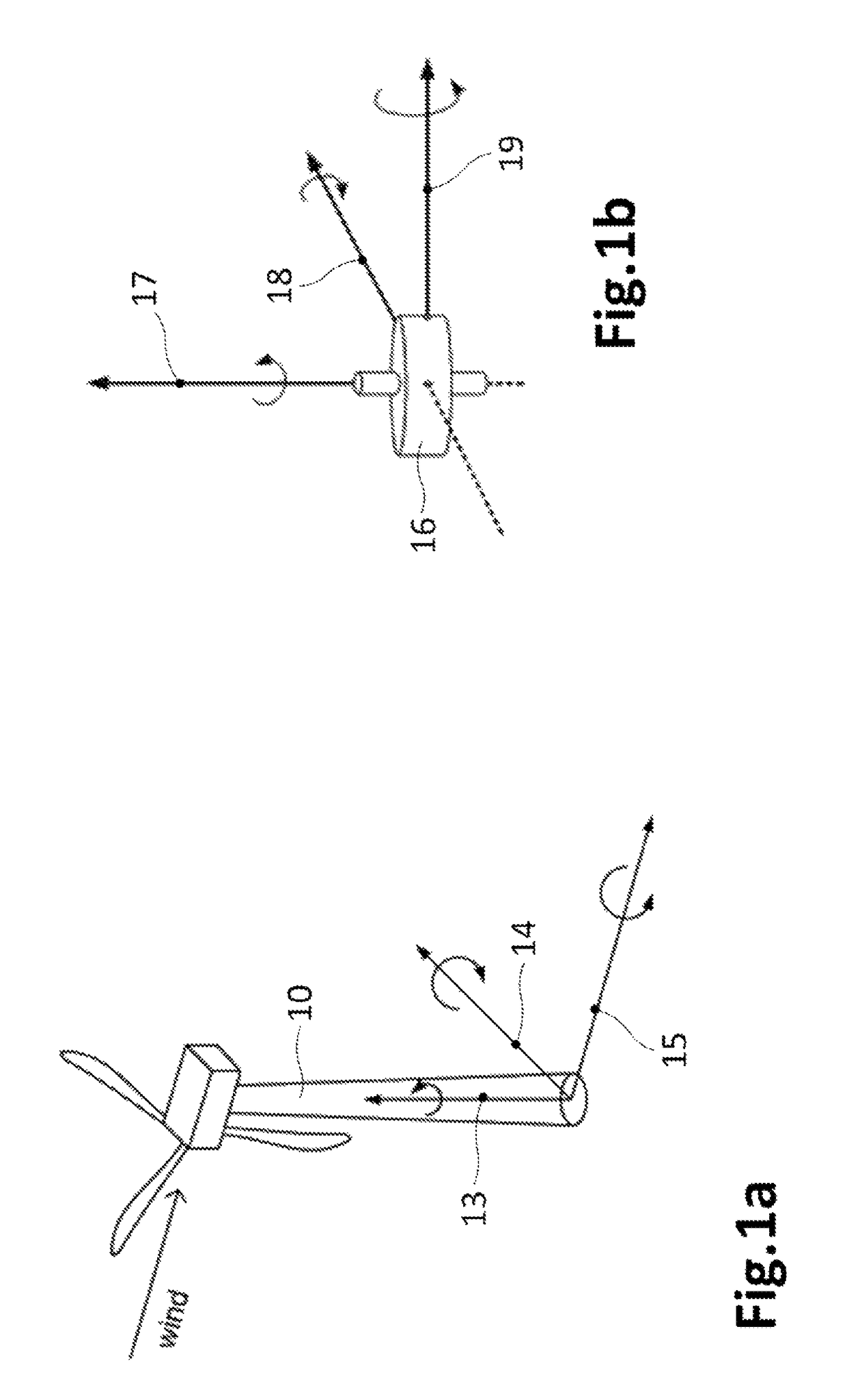Wind turbine stabilization
a wind turbine and stabilizer technology, applied in the direction of floating buildings, vessel movement reduction by gyroscopes, anchoring arrangements, etc., to achieve the effect of dampening undeired movements, preventing detected tower movements, and short tim
- Summary
- Abstract
- Description
- Claims
- Application Information
AI Technical Summary
Benefits of technology
Problems solved by technology
Method used
Image
Examples
Embodiment Construction
[0028]In the following description, numerous specific details are set forth in order to provide a thorough understanding of the present invention. It will be understood by one skilled in the art however, that the present invention may be practiced without some or all of these specific details. In other instances, well known elements have not been described in detail in order not to unnecessarily obscure the description of the present invention.
[0029]FIG. 1a is a schematic representation of an offshore horizontal axis wind turbine having a tower 10 and a floating platform (not shown) supporting the tower 10. This figure also shows the main reference axes 13, 14, 15 on a reference frame placed at a bottom region of the tower 10 of the wind turbine. A first of said axes is commonly called yaw axis 13 which substantially coincides with a longitudinal axis of the tower 10. A second of said axes is the pitch axis 14, and a third axis is the roll axis 15 which is aligned with the wind dire...
PUM
 Login to View More
Login to View More Abstract
Description
Claims
Application Information
 Login to View More
Login to View More - R&D
- Intellectual Property
- Life Sciences
- Materials
- Tech Scout
- Unparalleled Data Quality
- Higher Quality Content
- 60% Fewer Hallucinations
Browse by: Latest US Patents, China's latest patents, Technical Efficacy Thesaurus, Application Domain, Technology Topic, Popular Technical Reports.
© 2025 PatSnap. All rights reserved.Legal|Privacy policy|Modern Slavery Act Transparency Statement|Sitemap|About US| Contact US: help@patsnap.com



